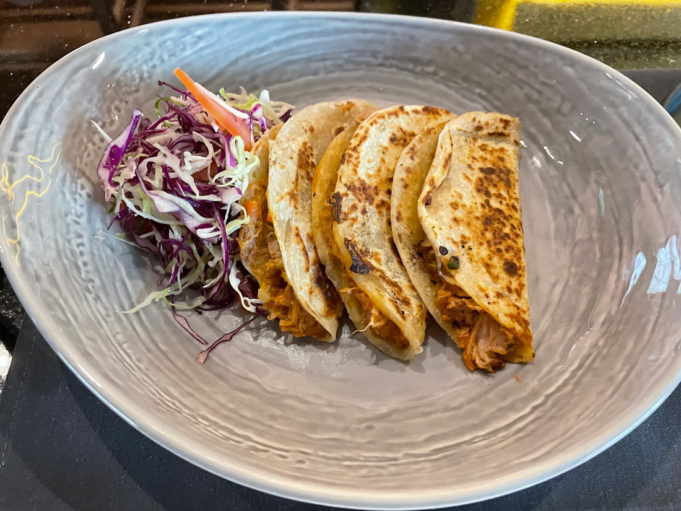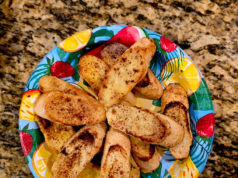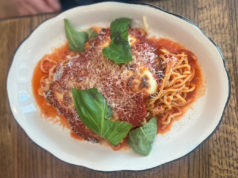Last fall, I attended the Fort Worth Food + Wine Festival and was struck by Don Artemio’s food stand, which had six goat carcasses roasting over coals. That was hard to ignore. So was the fact that this restaurant, located in Saltillo, Mexico, had chosen our city for its second location in the world. The place, whose kitchen focuses on the cuisine of northeastern Mexico, aims to prove that Mexican food deserves the upscale treatment every bit as much as French, Italian, or Japanese. Let our entire Mexican dining scene take note that a serious new player has arrived.
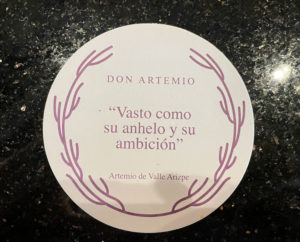
PHOTO BY KRISTIAN LIN
The name comes from Artemio de Valle Arizpe, the early 20th-century diplomat, novelist, and historian who was as famous for his love of good food as for his literary works. His quotes are even printed on the drink coasters. The eatery on West 7th is decorated with Saltillo tile, of course, along with a bookshelf holding 23 of Valle Arizpe’s 54 published novels. Serapes and seashells are incorporated into the decor, with earth tones and high ceilings creating a relaxing feel.
The place charges for its tortilla chips, which will strike some diners as wrong, although the flaky and lightly crispy chips make a case for it. Of the four accompaniments to the totopos, I liked the kicky serrano dip and the house-made Cotija cheese, which was the best that I’ve ever had. Other Mexican places serve up soggy, salty curds that could be confused for cheap feta — Don Artemio gives you an airy, slightly tangy, almost powdery cheese that I wish I had a tub of in my refrigerator.
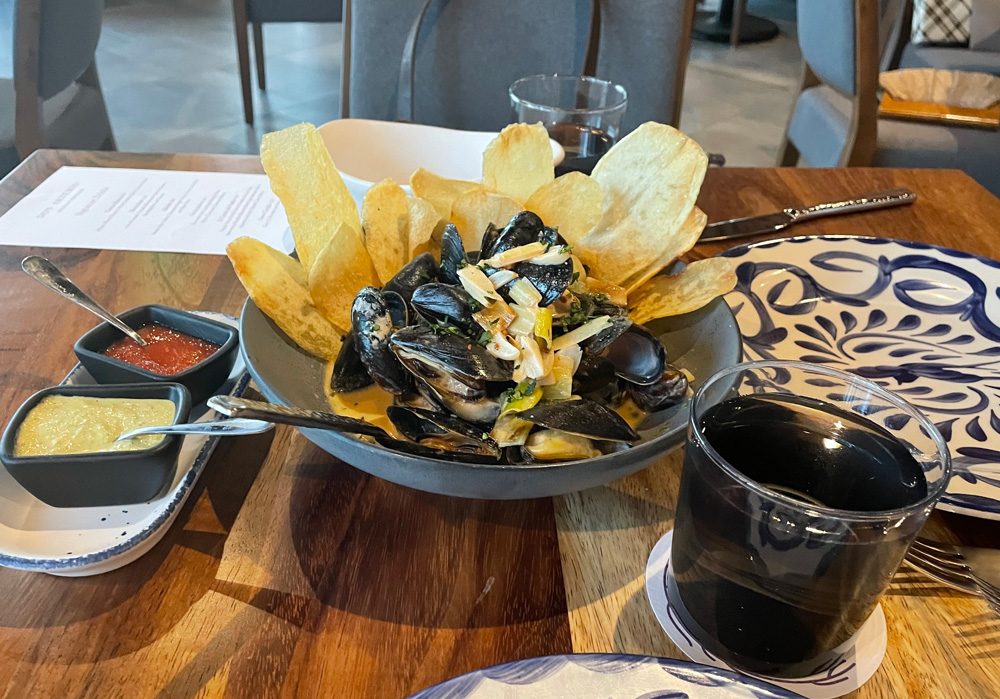
PHOTO BY KRISTIAN LIN
My eating partner noted that the mussel appetizer was a Mexican take on moules frites, with the thinly shaved slices of fried potato standing in for the French fries. The mollusks were juicy, and my partner couldn’t stop using the empty shells to scoop up the creamy chipotle sauce that brought a pure note of smokiness to the meat. The portion size was enough that, if the dish had been accompanied by bread, it could have made a fine lunch on its own.
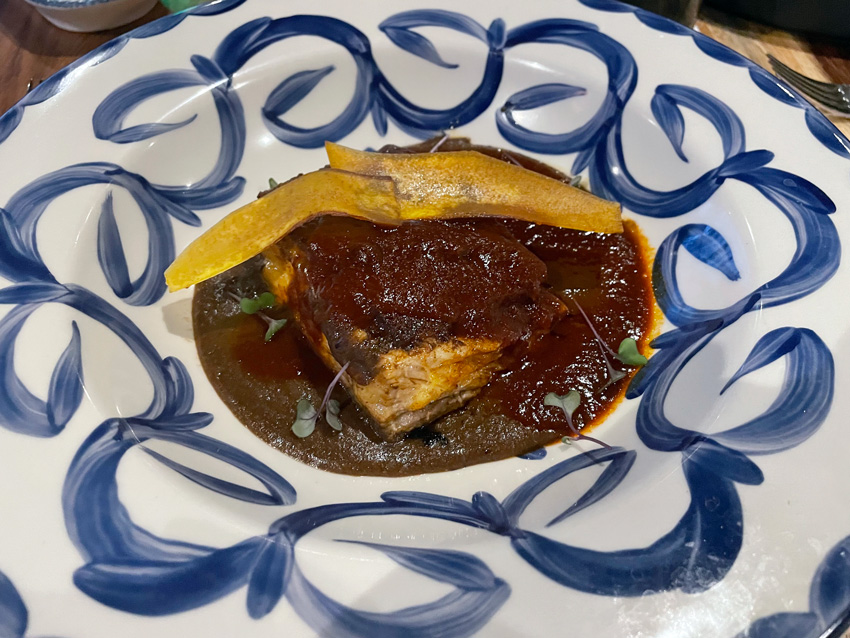
My pork belly confit didn’t look like much, a square of meat sitting in a sea of asado de boda sauce. Then I pulled some pork off and ate it, and — holy crap — was it rich. The word “decadent” does not do justice to this bomb of fat and flavor that made my head spin. I appreciated the earthy heat of the sauce, a cross between red chile and mole, but I needed a spritz of lime juice to cut through the fat or more than just the two plantain chips to give the meat a textural contrast. (The confit means there’s no crunchy fried crust.) If you are not watching your waistline or your cholesterol, this dish is your splurge.
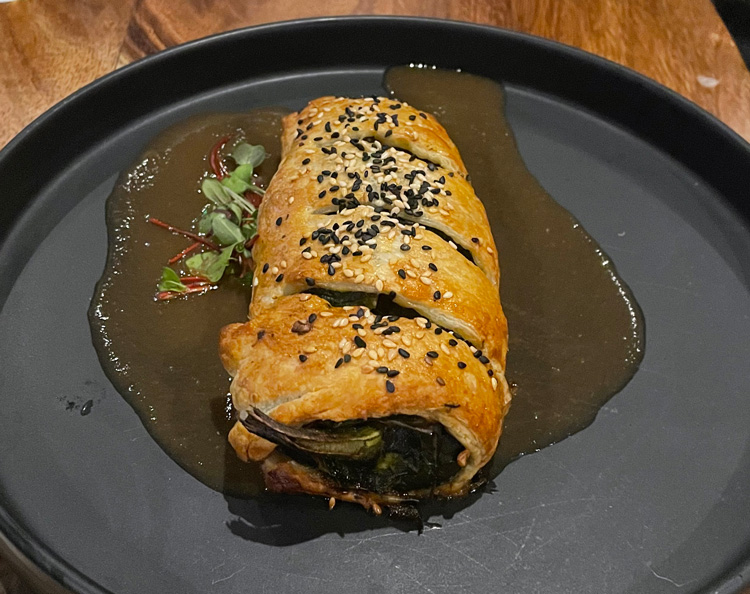
PHOTO BY KRISTIAN LIN
The chile hojaldrado, the adjective referring to the fried puff-pastry shell encasing a poblano pepper stuffed with cream cheese and pecans, was a more harmonious combination of flavors and textures, with the nuts and cheese playing nicely against the smoky pepper, which was mercifully not so hot that it overwhelmed the other elements. If you like jalapeño poppers with cream cheese, this is a more grown-up, vegetarian version that’s large and refined enough to work as an entrée without embarrassing you to tell your friends that you had it for dinner.
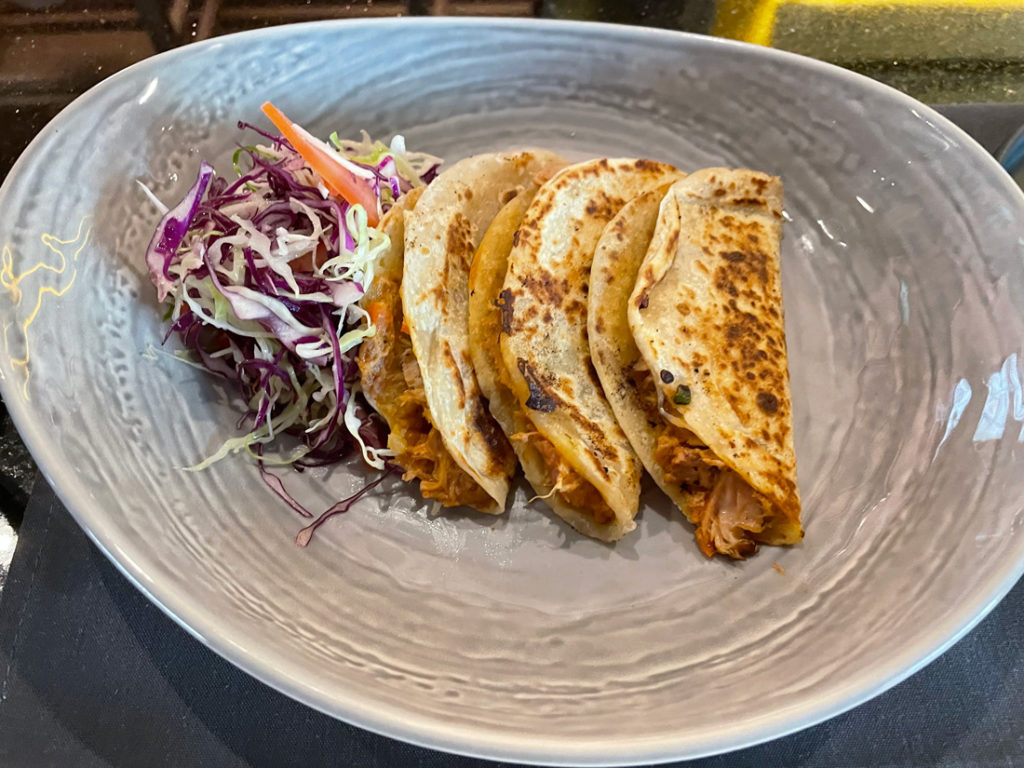
PHOTO BY KRISTIAN LIN
I went back solo for those goat tacos, which are served only at lunch. Technically, they’re kid, since the “cabrito” in their name refers to animals slaughtered at age 3-5 months, but you can understand why the restaurant might not want to say they’re serving “kid.” Many people associate goat meat with animals that live with humans, eat human trash, and taste like it. These elegant tacos were reminiscent of a more tender version of pulled pork, unctuous and just gamy enough to give it character without putting you off. They came with a red cabbage slaw whose lime dressing did much to counter the meat’s richness. My only complaint was with the sharp bits of bone in the meat — a hazard with goat, which is often cut from the shoulder with a band saw — so you might want to be careful chewing these.
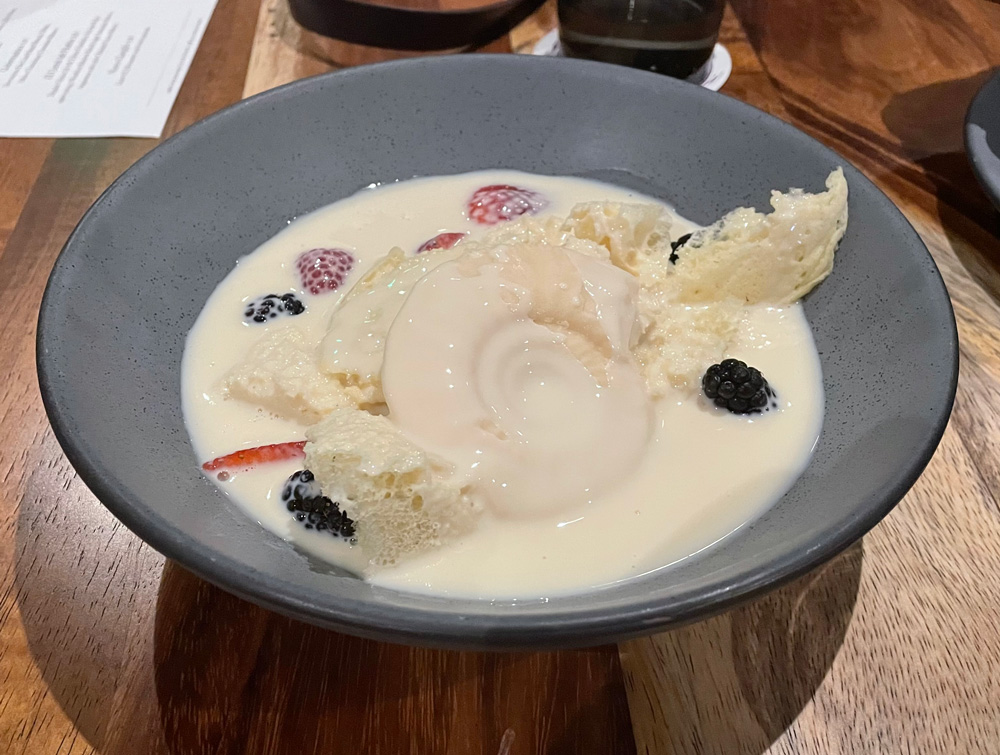
PHOTO BY KRISTIAN LIN
Dessert was a deconstructed tres leches cake that seemed like an example of overthinking. The irregular bits of cake and berries (topped by a seashell-shaped disc of white chocolate ice cream) came in a bowl with evaporated milk at the bottom, while the waiter poured condensed milk over the concoction at the table. The effect made the dessert like breakfast cereal, with the cake pieces quickly becoming milk-logged though still tasty. For your after-dinner course, you may want to try the Mexican labels on the wine list, high-quality stuff that is hard to find outside the borders of Mexico. My spicy, heavily tannic red from Baja California made a good chaser for the tacos, though most of the wines are from Coahuila state. Every phase of Don Artemio’s service promises something unique, a rarefied experience in Fort Worth’s Mexican dining.
Don Artemio
Totopos $8
Palomas de cabrito $16
Mejillones en salsa de chipotle $22
El famoso “chile hojaldrado” $28
Pork belly confitado en asado de bodas $36
Tres leches del desierto $16



